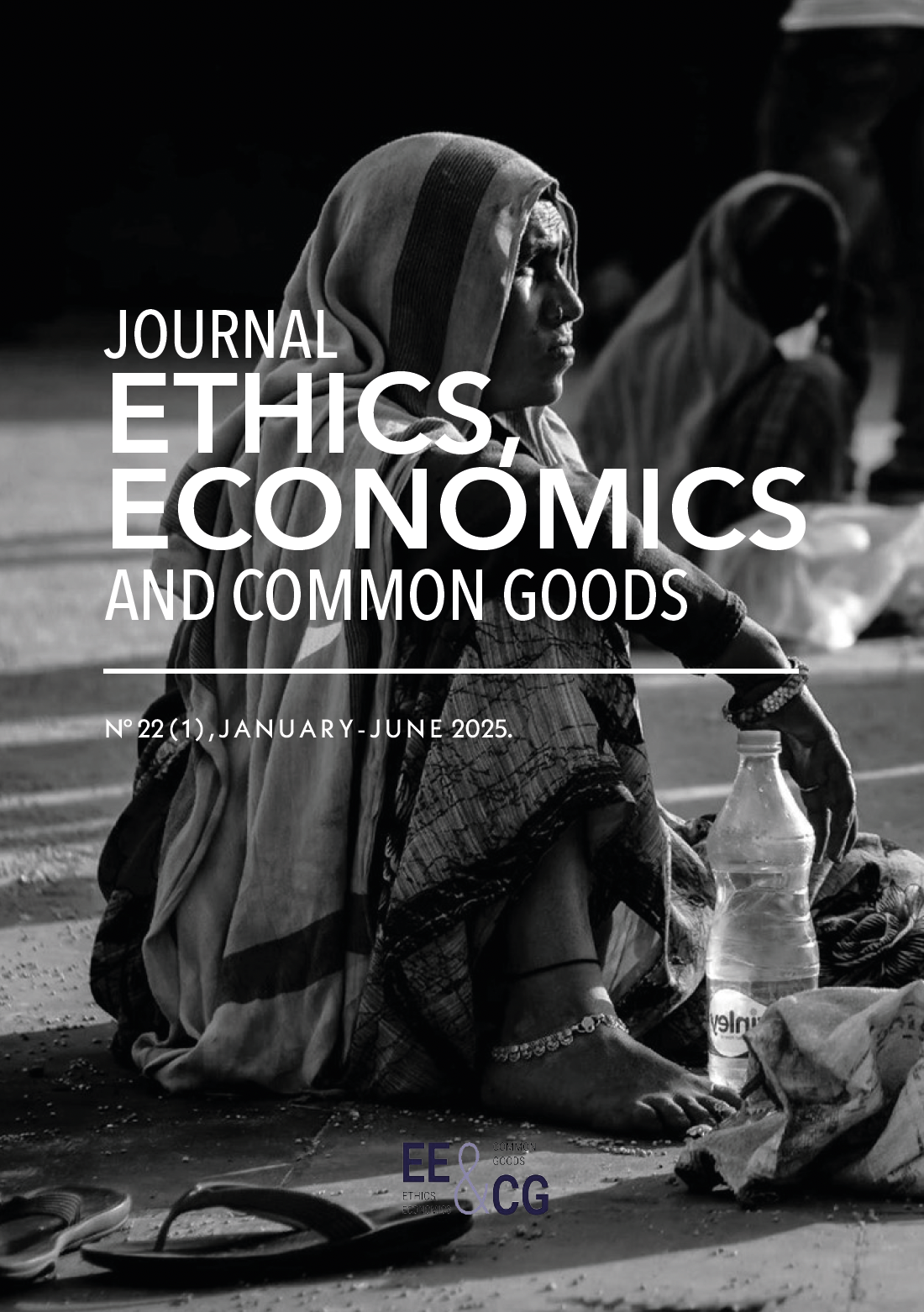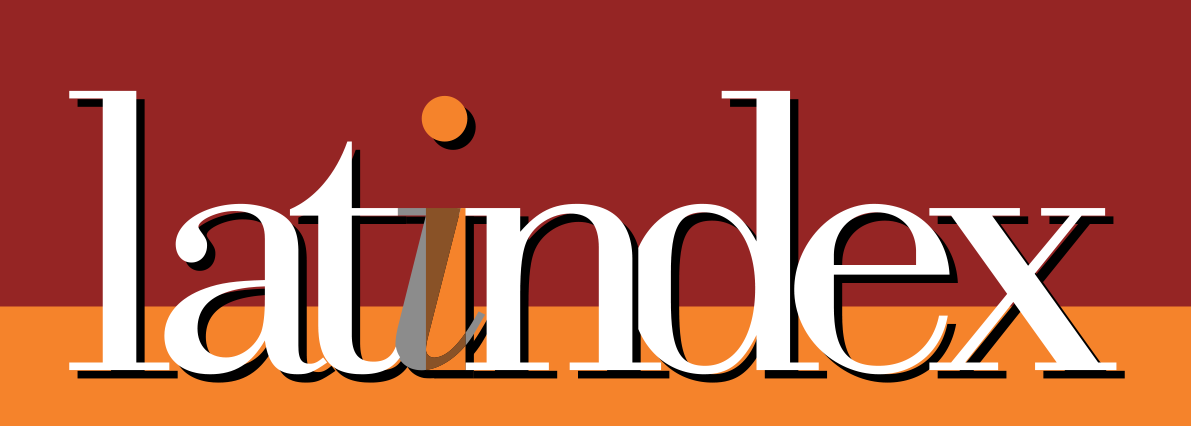The Role of Lending Interest Rate in Mexico and Latin America to close the Ethical Gap in Financial Inclusion
Mots-clés :
Banks, Ethical gap, Financial inclusion, Lending interest ratesRésumé
This research aims to analyze the effect of lending interest rates in Mexico, addressing the related ethical gaps, which should be aligned with financial inclusion. The methodology is a review of the theoretical framework of social business presented, followed by a detailed study of the effect of lending interest rates in Mexico. The results point to Latin America's very high inequality levels, which are bogging down the financial inclusion model and preventing it from achieving its social sustainability objectives. Enter affordable Mexican microfinance in the financial system's global social business transformation. By applying best practices and offering a reasonable cost of funding, this approach has shown the ability to create significant customer value. As such, it is essential for effective and balanced economic growth, enabling greater financial inclusion that advances the democratization of development in line with social justice.
Métriques
Références
Abadi, J, Brunnermeier, M. and Koby, Y. (2023) ‘The reversal interest rate’, American Economic Review, 113(8) [online].
Available at: https://www.aeaweb.org (Accessed: 23 August 2024)
Ahamed, M M, Ho, S J, Mallick, S K. and Matousek, R. (2021) ‘Inclusive banking, financial regulation, and bank
performance: cross-country evidence’, Journal of Banking & Finance, 124, pp.106055 [online]. Available at: https://www.
sciencedirect.com (Accessed:30 August 2024)
Ahmad, A H, Green, C. and Jiang, F. (2020) ‘Mobile money, financial inclusion, and development: A review with reference to
African experience’, Journal of Economic Surveys, 34(4) [online]. Available at: https://www.wiley.com (Accessed:23 August 2024)
Allais, M. (2024) Economy and Interest: A New Presentation of the Fundamental Problems Related to the Economic Role of
the Rate of Interest and Their Solutions. 1st edn. London: University of Chicago Press
Appiah-Otoo, I. and Song, N. (2021) ‘The impact of fintech on poverty reduction: Evidence from China’, Sustainability,
(9) [online]. Available at: https://www.mdpi.com (Accessed: 30 August 2024)
Arner, D W, Buckley, R P, Zetzsche, D A. and Veidt, R. (2020) ‘Sustainability, FinTech, and financial inclusion’, European
Business Organization Law Review, 21, pp.7–35 [online]. Available at: https://www.ssrn.com (Accessed: 06 September 2024)
Banna, H, Mia, M A, Nourani, M. and Yarovaya, L. (2022) ‘Fintech-based financial inclusion and risk-taking of microfinance
institutions (MFIs): Evidence from Sub-Saharan Africa’, Finance Research Letters, 45 [online]. Available at:
https://www.mmu.ac.uk (Accessed: 29 August 2025)
Barajas, A, Beck, T, Belhaj, M, Naceur, S B, Cerra, V. and Qureshi, M S. (2020) Financial inclusion: what have we learned
so far? What do we have to learn?, International Monetary Fund [online]. Available at: https://www.imf.org (Accessed: 6
September 2024 2024)
Bateman, M. (2010) Why Doesn’t Microfinance Work? The Destructive Rise of Local Neoliberalism.1st edn. London: Zed Books.
Bazarbash, M., Beaton, K. and Eriksson, U. (2020) Filling the gap: Digital credit and financial inclusion, International
Monetary Fund [online]. Available at: https://www.imf.org (Accessed: 30 August 2024)
Bhattacharyya, A, Wright, S. and Rahman, M L. (2021) ‘Is better banking associated with financial inclusion and mandated
CSR expenditure in a developing country?’, Accounting & Finance, 61(1) [online], pp.125–161. Available at: https://
www.academia.edu (Accessed: 23 August 2024)
CGAP (2021) High interest rates in Latin American microfinance [online]. Available at: https://www.cgap.org/ (Accessed:
August 2024)
CONDUSEF (2018) Report on financial complaints in Mexico [online]. Available at: https://www.condusef.gob.mx/
(Accessed: 5 September 2024)
Cumming, D, Johan, S. and Reardon, R. (2023) ‘Global fintech trends and their impact on international business: a
review’, Multinational Business Review 31(3) [online]. Available at: https://www.ssrn.com (Accessed: 6 September 2024)
Demirgüç-Kunt, A, Klapper, L, Singer, D. and Van Oudheusden, P. (2018) The Global Findex Database 2017: Measuring
Financial Inclusion and the Fintech Revolution. 1st edn. Washington, DC: World Bank.
Ediagbonya, V. and Tioluwani, C. (2023) ‘The role of fintech in driving financial inclusion in developing and emerging
markets: issues, challenges, and prospects’, Technological Sustainability, 2(1) [online]. Available at: https://www.emerald.
com/insight/content/doi/10.1108/techs-10-2021-0017/full/html (Accessed:13 September 2024)
Eggertsson, G B, Juelsrud, R E, Summers, L H. and Wold, E G. (2024) ‘Negative nominal interest rates and the bank
lending channel’, Review of Economic Studies, 91(4), pp.2201–2275 [online]. Available at: https://www.nber.org (Accessed:
September 2024)
Enríquez, R. (2024) ‘The rise and collapse of stabilizing development’. The Mexican Economy. 2nd edn. London:Palgrave
Macmillan, pp.34.
Feghali, K, Mora, N. and Nassif, P. (2021) ‘Financial inclusion, bank market structure, and financial stability: International
evidence’, The Quarterly Review of Economics and Finance, 80, pp.236–257 [online]. Available at:https://www.
sciencedirect.com/science/article/abs/pii/S1062976921000132 (Accessed: 13 September 2024)
González-Rossano, C. y Terán-Bustamante, A. (2025) ‘The Role of Lending Interest Rate in Mexico and Latin America to close the EthicalGap in Financial. Inclusion’, Journal of Ethics, Economics and Common Goods, 22(1), p. 60-75
Gabor, D. and Brooks, S. (2020) ‘The digital revolution in financial inclusion: international development in the fintech
era’, Material Cultures of Financialization. London: Routledge [online], pp.14 Available at: https://www.york.ac.uk (Accessed:
September 2024)
Garcia-Mora, F. and Mora-Rivera, J. (2023) ‘Exploring the impacts of Internet access on poverty: A regional analysis
of rural Mexico’, New Media & Society, 25(1) [online]. Available at: https://www.sagepub.com (Accessed:30 August 2024)
Geide-Stevenson, D. and La Parra-Perez, A. (2024) ‘Consensus among economists 2020—A sharpening of the picture’, The
Journal of Economic Education, 55(4), pp.461–478 [online]. Available at: https://www.academia.edu (Accessed: 23 August 2024)
Gudgeon, L, Werner, S, Perez, D. and Knottenbelt, W J. (2020) ‘DeFi protocols for loanable funds: Interest rates,
liquidity and market efficiency’, Proceedings of the 2nd ACM Conference on Advances in Financial Technologies, October,
pp.92–112 [online]. Available at: https://dl.acm.org/doi/abs/10.1145/3419614.3423254 (Accessed: 23 August 2024)
Guerra-Leal, E M, Arredondo-Trapero, F G. and Vázquez-Parra, J C. (2023) ‘Financial inclusión and digital banking
on an emergent economy’, Review of Behavioral Finance, 15(2), pp.257–272 [online]. Available at: https://www.emerald.
com/insight/content/doi/10.1108/rbf-08-2021-0150/full/html (Accessed: 13 September 2024)
Hamdan, N.H. and Kassim, S. (2020) ‘Critical factors affecting micro-entrepreneur’s adoption of digital financial
services offered by Islamic Microfinance Institution’, International Journal of Academic Research in Business and Social
Sciences [online]. Available at: https://www.researchgate.net (Accessed: 30 August 2024)
Kara, A, Zhou, H. and Zhou, Y. (2021) ‘Achieving the United Nations’ sustainable development goals through financial
inclusion: A systematic literature review of access to finance across the globe’, International Review of Financial
Analysis [online]. Available at: https://www.brunel.ac.uk (Accessed: 23 August 2024)
Klaar, A C R, Stefenon, S F, Seman, L O., Mariani, V C. and Coelho, L D S. (2023) ‘Structure optimization of ensemble
learning methods and seasonal decomposition approaches to energy price forecasting in Latin America: A case study
about Mexico’, Energies, 16(7), pp.3184 [online]. Available at: https://www.mdpi.com (Accessed: 6 September 2024)
Koomson, I, Villano, R A. and Hadley, D. (2020) ‘Effect of financial inclusion on poverty and vulnerability to poverty:
Evidence using a multidimensional measure of financial inclusion’, Social Indicators Research, 149(2) [online]. Available
at: https://www.ssrn.com (Accessed: 5 September 2024)
Ledgerwood, J. (1998) Microfinance Handbook: An Institutional and Financial Perspective.3rd edn. Washington, DC: World Bank.
Lee, C C., Lou, R. and Wang, F. (2023) ‘Digital financial inclusion and poverty alleviation: Evidence from the sustainable
development of China’, Economic Analysis and Policy, 77 [online]. Available at: https://doi.org/10.1016/j.eap.2022.12.004
(Accessed: 23 August 2024)
Morduch, J. (2000) ‘The microfinance schism’, World Development, 28(4), pp.617–629.
Narula, N., Swartz, L. and Frizzo-Barker, J. (2023) CBDC: Expanding financial inclusion or deepening the divide? Exploring
design choices that could make a difference, eScholarship [online]. Available at: https://escholarship.org (Accessed:
September 2024)
OECD (2021) The role of fintech in financial inclusion. Paris: OECD Publishing.
Ozili, P K. (2021) ‘Financial inclusion research around the world: A review’, Forum for Social Economics, 50(4) [online].
Available at: https://www.ssrn.com (Accessed: 06 September 2024)
Ozili, P K. (2020) ‘Theories of financial inclusion’, Özen, E. and Grima, S (eds) Uncertainty and Challenges in Contemporary
Economic Behavior. Bingley: Emerald Publishing Limited, pp.89–115 [online]. Available at: https://www.ssrn.com
(Accessed: 13 September 2024)
Qi, X. et al. (2023) Fine-tuning aligned language models compromises safety, even when users do not intend to!. Cornell University
[online]. Available at: https://arxiv.org/abs/2310.03693 (Accessed: 06 September 2024)
Qureshi, S. (2020) ‘Why data matters for development? Exploring data justice, microentrepreneurship, mobile money
and financial inclusion’, Information Technology for Development, 26(2) [online]. Available at: https://www.tandfonline.
com (Accessed: 25 August 2024)
Raihan, A. et al. (2023) ‘The dynamic impacts of economic growth, financial globalization, fossil fuel, renewable energy,
and urbanization on load capacity factor in Mexico’, Sustainability, 15(2) [online]. Available at: https://www.mdpi.
com (Accessed: 30 August 2024)
Rosenberg, R. (2011) ‘Rethinking microfinance: Issues and challenges’, World Development, 39(4), pp.581–590.
Rosenberg, R., Gonzalez, A. and Narain, S. (2009) ‘The new moneylenders: Are the poor being exploited by high
microcredit interest rates?’ CGAP Occasional Paper, 15(2), pp.1–22.
Schwert, M. (2020) ‘Does borrowing from banks cost more than borrowing from the market?’, The Journal of Finance,
(2) [online]. Available at: https://www.ssrn.com (Accessed: 4 September 2024)
Shneiderman, B. (2020) ‘Bridging the gap between ethics and practice: guidelines for reliable, safe and trustworthy human-
centered AI systems’, ACM Transactions on Interactive Intelligent Systems (TiiS), 10(4), pp.1–31 [online]. Available
at: https://dl.acm.org (Accessed: 4 September 2024)
Smith, J. (2019) ‘Transparency and fairness in microfinance’, Journal of Business Ethics, 45(3), pp.245–260.
Urueña-Mejía, J C, Gutierrez, L H. and Rodríguez-Lesmes, P. (2023) ‘Financial inclusion and business practices of
microbusiness in Colombia’, Eurasian Business Review, 13(2) pp.465–494 [online]. Available at: https://link.springer.com
(Accessed: 6 September 2024)
World Bank (2021) Financial Inclusion and Development: Latin America Report. Washington, DC: World Bank.
Yunus, M. (2003) Banker to the Poor: Micro-Lending and the Battle Against World Poverty. Londres: Aurum.
Zhu, Z. and Liu, N. (2021) ‘Early warning of financial risk based on K‐means clustering algorithm’, Complexity, 2021(1)
[online]. Available at: https://onlinelibrary.wiley.com (Accessed: 13 September 2024)
Téléchargements
Publiée
Comment citer
Numéro
Rubrique
Licence
(c) Tous droits réservés Ethique, economie et biens communs 2025

Ce travail est disponible sous licence Creative Commons Attribution - Pas d’Utilisation Commerciale - Partage dans les Mêmes Conditions 4.0 International.
CC BY-NC-ND 4.0 Creative Commons Attribution-NonCommercial-NoDerivative 4.0 Internal licenses. This license allows you to share, copy, distribute and transmit the work for non-commercial purposes, providing attribution is made to the authors (but not in a way that suggests that he endorses you or your use of the work). In order to access detailed and updated information on the license, please visit: https://creativecommons.org/licenses/by-nc-sa/4.0/




